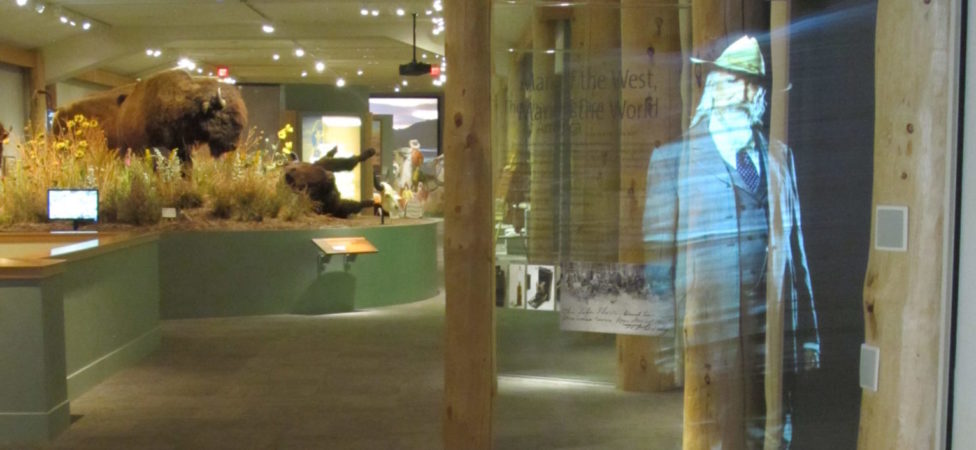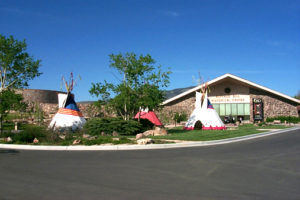
When you visit the Buffalo Bill Center of the West, you may be surprised to hear the mysterious creaking of a floorboard, feel a chill down your spine, and the sense the ghostly presence of one of the American West’s most famous cowboys: William Frederick Cody, most commonly known as Buffalo Bill. When the Center was renovated, a new entrance display took a haunted turn, greeting guests with the ghostly image of Buffalo Bill.
In September 2014, Greg Dickinson and Eric Aoki, professors in the Department of Communication Studies, introduced members of Great Conversations to the ways the Buffalo Bill Center of the West creates meaningful memories of the past and frames visitors’ understanding of Buffalo Bill’s role in the conception of American West. During their presentation, Dickinson and Aoki shared excerpts from their upcoming co-authored book on the Buffalo Bill Center of the West, which explores the concept of a “haunted” space and how it can alter guests’ perception of the American West.
“Haunt is a very interesting word,” Dickinson explains, “because on the one hand it means a familiar place. On the other hand, it can mean a place that is scary and disconcerting.”
Dickinson and Aoki invited audience members to think of familiar and comfortable spaces in Northern Colorado. They then connected these spaces to the repressed memories of the American West, such as the destruction of Native American tribes. In doing so, Dickinson and Aoki expanded the meaning of the Buffalo Bill Center of the West beyond its role as a museum to understand how it is used as material rhetoric that influences perceptions of the history of the United States.
Since their Great Conversations presentation, Dickinson and Aoki along with their co-author, Brian Ott, have nearly worked to finalize a book manuscript. The book not only addresses the Buffalo Bill Museum but the other four museums that constitute the Buffalo Bill Center of the West.
“Presenting at Great Conversations allowed us to see firsthand how our research could make a difference in audience opinions on the American West, material rhetoric, and culture,” shares Dickinson.

Dickinson and Aoki have also implemented their research in the classroom, teaching students about how identity is created. Using the Buffalo Bill Center of the West as an example, students explore the word “haunt” and its relation to white masculinity. In Aoki’s classes, he enjoys listening to students talk through the power of cultural spaces to implicate how we understand communication of cultural identity and representation.
“Students often, and for good reason, think of cultural identity and representation through the consumption of media, so it is great to watch the light-bulbs go on about how significant places like museums or centers can be in how we see and understand culture and communication,” says Aoki.
Students are challenged to explore how this connection manifests in their daily life. By using the contemporary example of the Buffalo Bill Center of the West, Dickinson and Aoki are able to encourage their students to look into the ways rhetoric and culture are evident throughout our history and our identity as Americans.